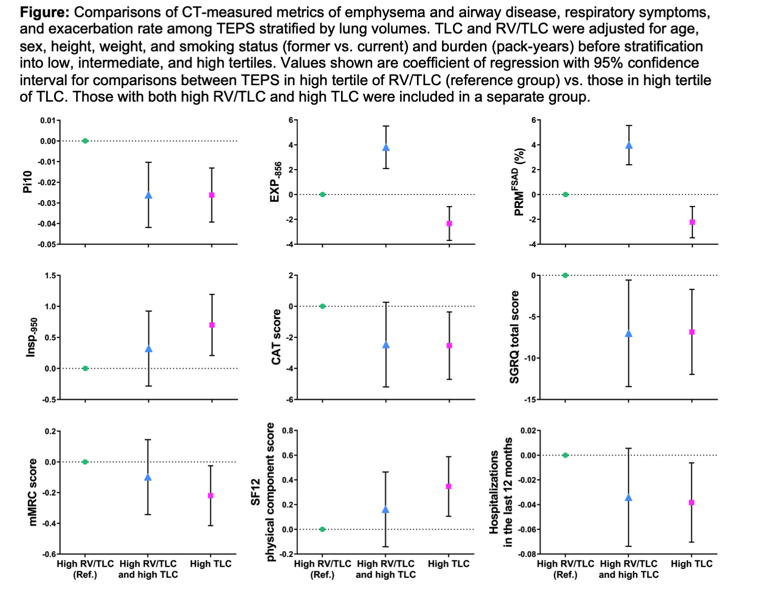Abstract
Rationale-The ratio of residual volume to total lung capacity (RV/TLC) identifies the tobacco-exposed persons with preserved spirometry (TEPS) at higher likelihood of developing spirometric COPD. Among them, TLC also identifies subgroups with diverging spirometric disease progression.
Objective-Determine the radiographic and clinical characteristics identified by TLC and RV/TLC among TEPS who progress to develop COPD.
Methods-We categorized TEPS in SPIROMICS (N=814) by tertiles of baseline TLC or RV/TLC, and used adjusted linear models to examine high tertiles of each or both for changes in spirometry over 5 years. We also examined the associated prevalence of CT-measured emphysema (Insp-950; PRMEMPH) and airway disease (EXP-856; PRMfSAD; Pi10), and the severity of respiratory symptom severity (mMRC; CAT; SGRQ; SF12; annualized exacerbation) at baseline.
Results-Patterns of spirometric change differed by TLC vs. RV/TLC categories: the TLChigh tertile showed stable FEV1 but increasing FVC; the RV/TLChigh tertile showed a nominal decline in FEV1. Compared to TLChigh, RV/TLChigh had less emphysema but more airway disease, respiratory symptoms, and severe exacerbations (Figure).
Discussion-Lung volumes prospectively identify different phenotypes with distinct radiographic and clinical disease characteristics in pre-COPD stage among TEPS.
